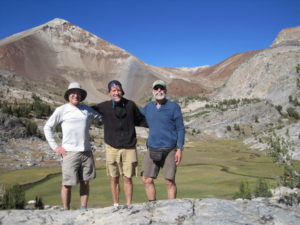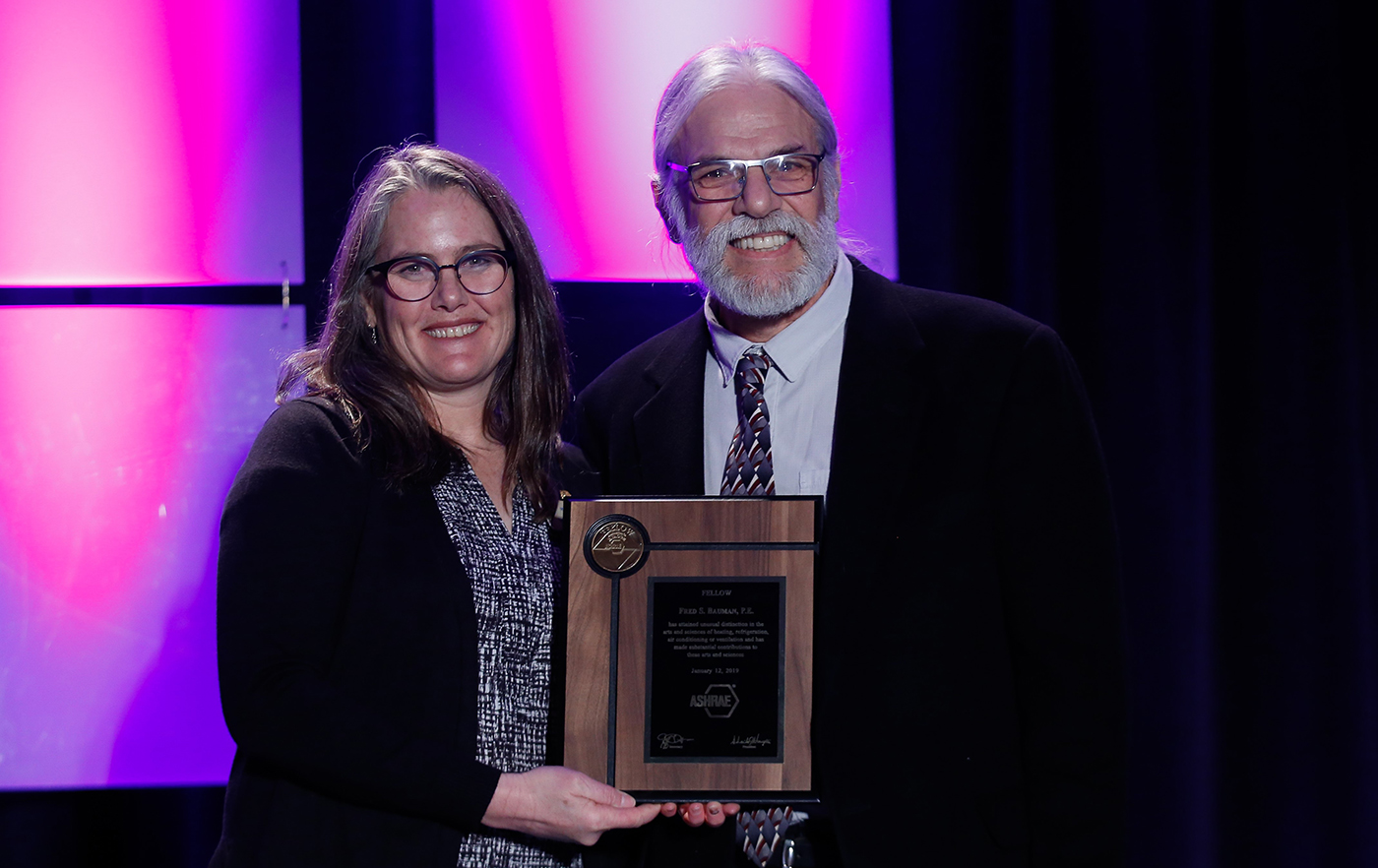Project Scientist Fred Bauman recently received the ASHRAE Fellow award, a recognition for those who have distinguished themselves in the heating, ventilation, and air conditioning (HVAC) industry. His contributions to ASHRAE and the broader industry are based on the extensive research on underfloor air distribution (UFAD) that he directed at CBE, leading to deeper knowledge and guidance for these advanced HVAC systems. More recently, he has led a similar effort within CBE to address thermally massive radiant systems. Learn more about his research and what he has been working on over the past 30+ years at UC Berkeley.
How did you start at the UC Berkeley Building Science Group (BSG)?
I was the first full-time researcher hired by Ed Arens (CBE director), back in November 1984; within a few months of that same time, we also managed to hire two new professors, Gail (Schiller at the time) Brager and Chris Benton. This team started the Building Science Group. The first project was the ASHRAE Research Project 462-RP, Field Study of Thermal Environments and Comfort in Office Buildings; we built a portable cart for measurement, and included with it a survey on an IBM laptop computer (the start of major themes of our work).
My first project in our lab space was to design and install the mechanical system for our controlled environment chamber, now a key part of the CBE infrastructure. By that time, Ed had already built the boundary layer wind tunnel – he was involved in the wind ordinance for San Francisco, and the tunnel was essential to that work.
At the end of our first ASHRAE project in the late 1980s, we found that only about 60% of building occupants were satisfied, 20% wanted hotter temperatures, and 20% wanted it to be cooler, even when room temperature setpoints were maintained within the ASHRAE-specified thermal comfort zone. This was the first time this was discovered at such a large scale (10 buildings), and started our interest in personal control (we called it task/ambient conditioning, looking at how to give individuals control). We were testing desktop and Johnson Controls’ PEMs (personal environmental module), and some controllable air distribution outlets built into raised floor panels. This was the origin of many of the things that we are doing now.
Another theme that came out of this interest in personal control devices was taking a more practical approach to our work, looking for ways to impact the industry. At that time in the mid-1990’s, underfloor air distribution (UFAD) was starting to attract attention and seemed like the best way to deliver conditioned air at floor level close to building occupants for personal control purposes. So I shifted my focus to UFAD while continuing to look for opportunities to incorporate individual control and by this point CBE had officially been started. Many industry partners were joining because of the high level of interest in UFAD (we jokingly were referred to as the “Center for UFAD” during this time).
How did the key themes at CBE form?
These grew out of the key understanding that one environment will not work for everyone, and this work continues to this day.
You worked with Tom Webster for many years.
We worked at LBNL in the late ‘70s and ‘80s in the passive solar group; Gail Brager was a graduate student at the same time, Tom was doing energy simulations at the same time. But after Reagan was elected president in 1980, he eliminated federal funding for solar energy, so we had to find other work. Gail graduated and was hired as assistant professor. Then when UFAD took off, I asked Tom to join us.

Ed Arens, Charlie Huizenga and Fred in front of Red Slate Mountain, Sierra Nevada (August 2013).
What do you appreciate about CBE?
For me, it’s personal: my colleagues are some of my best friends, they are very supportive. We are a talented group that is fun to work with!
What are some future challenges for the industry and for CBE?
A big hurdle is how to apply the knowledge we have gained – we want to give practical guidance to architects and engineers, how to address existing buildings. As much fun as it would be to put radiant systems into old buildings, not everyone can do this. But we have learned that we can save 30% energy just with intelligent control system changes, software and controls.
Why doesn’t everyone do this already?
Our industry has some built in conservatism, its hard to implement changes. In California we are pushing a bit harder for change, with new regulations such as total renewable energy by 2045.
What would the next big area be?
Make buildings as close to passive as possible, and using mechanical systems only as needed (and downsizing the equipment). This is hard to do, and requires that you engage occupants and challenge them to change their expectations (which is not impossible). It requires that people deal with the larger issues, for the common good.
Existing buildings are admittedly a huge challenge, and would be good to continue to focus on improving those buildings to make them more efficient.
When you are not working on CBE projects, how do you spend your time?
I’m lucky enough to have several fun activities outside of CBE that I enjoy doing. Every summer for the past 10 years or so I have been spending two to four weeks in Venice, Italy, as a visiting scholar at the University IUAV of Venice. I’m also currently playing keyboard in a rock and roll band (Mojo Messengers) that plays hits from the 1960s to 2000s. Long distance running and backpacking help to keep me healthy and happy!
Main image: Ed Arens, Charlie Huizenga and Fred in front of Red Slate Mountain, Sierra Nevada (August 2013).

